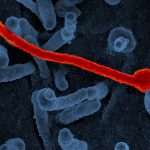Cholera Out break 2018
Key facts:
- Researchers have estimated that each year there are 1.3 million to 4.0 million cases of cholera, and 21 000 to 143 000 deaths worldwide due to cholera (1).
- Most of those infected will have no or mild symptoms, and can be successfully treated with oral rehydration solution.
- Severe cases will need rapid treatment with intravenous fluids and antibiotics.
- Provision of safe water and sanitation is critical to control the transmission of cholera and other waterborne diseases.
- Safe oral cholera vaccines should be used in conjunction with improvements in water and sanitation to control cholera outbreaks and for prevention in areas known to be high risk for cholera.
- A global strategy on cholera control with a target to reduce cholera deaths by 90% was launched in 2017. (Source: WHO)
History:
During the 19th century, cholera spread across the world from its original reservoir in the Ganges delta in India. Six subsequent pandemics killed millions of people across all continents
Symptoms:
Cholera is transmitted by the fecal-oral route, Cholera is a life-threatening secretory diarrhea induced by an enterotoxin secreted by V cholera. Numerous, voluminous watery stools, often accompanied by vomiting, and resulting in hypovolemic shock and acidosis. It is caused by certain members of the species Vibrio cholera which can also cause mild or in apparent infections
Causative agent:
There are many serogroups of V. cholera, but only two – O1 and O139 – cause outbreaks. V. cholera O1 has caused all recent outbreaks. V. cholera O139 – first identified in Bangladesh in 1992 – caused outbreaks in the past, but recently has only been identified in sporadic cases. It has never been identified outside Asia. There is no difference in the illness caused by the two serogroups.
Epidemiology:
According to the World Health Organization’s epidemiological report, the number of cholera cases during 2011 was 589,854, with a fatality rate of 1.3%. This number is the total number of cases reported in 58 countries; however, 61% of this number corresponds to the outbreak affecting Haiti and the Dominican Republic since October 2010.
In July 2012, a cholera outbreak began in Cuba, despite the fact that cholera was thought to have been eradicated in this country. As recently as October 2012, new cases were reported. In the same year, the epidemic in Haiti and the Dominican Republic continued.
New outbreaks keep emerging, even in areas where no case of cholera has ever been reported, which highlights the need of new measures to prevent and control great pandemics. Despite the existence of surveillance systems, water and food sanity, still no effective control to prevent appearance of new outbreaks has been achieved, mainly because such factors cannot be adequately regulated in developing countries.
Recent outbreaks:
The cholera outbreak in Harare was declared by the Ministry of Health and Child Care (MoHCC) of Zimbabwe on 6 September 2018 and notified to WHO on the same day. As of 3 October 2018, 8535 cumulative cases, including 163 laboratory-confirmed cases, and 50 deaths have been reported (case fatality rate: 0.6%). Of these 8535 cases, 98% (8341 cases) were reported from the densely populated capital Harare The pathogen is known to be Vibrio cholera O1 serotype Ogawa. Since confirmation on 6 September 2018
As of 1 October 2018, 3692 cases (14% of these were cases in Nigerian residents seeking care in Niger) with 68 deaths (case fatality rate = 1.8%) have been reported from twelve health districts in four regions



